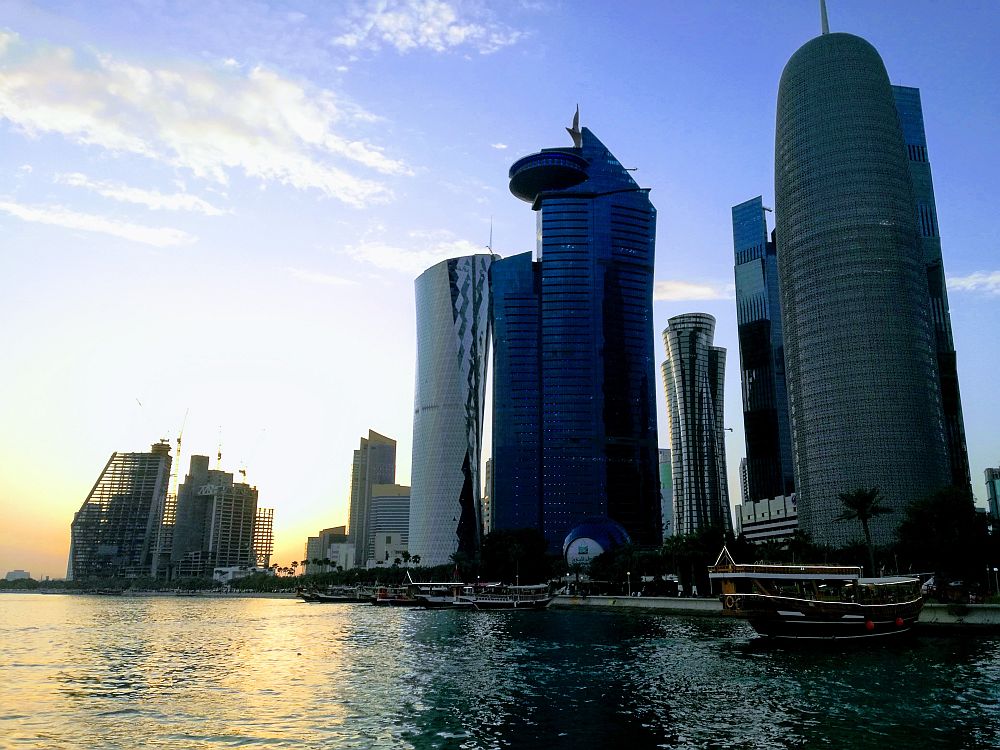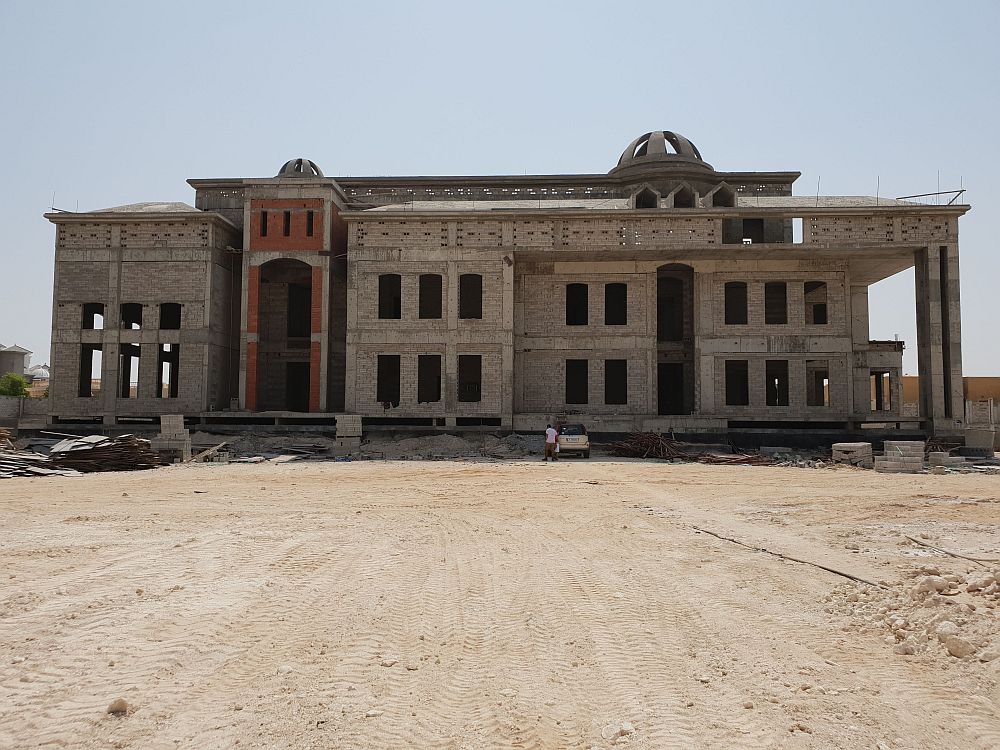YOUR BROWSER IS OUT-OF-DATE.
We have detected that you are using an outdated browser. Our service may not work properly for you. We recommend upgrading or switching to another browser.
Date: 05.02.2019 Category: general news, university people
Martyna Stasiniewska from the Faculty of Architecture has been living in Doha, the capital of Qatar, for over a year and a half. She went there with her husband, Konrad Cyprich, PhD, Eng from the Faculty of Chemistry
 Both researchers had been looking for opportunities for further professional development abroad. They were thinking about an English-speaking country, where they could pursue their scientific careers. - We didn't consider Qatar at all - says Martyna Stasiniewska. - The proposal was made by Professor Wiesław Królikowski of Texas Agricultural and Mechanical University, who was looking for an employee to work in a laboratory in Qatar. It was he who dispelled our fears about living and working in an Arab country - she adds.
Both researchers had been looking for opportunities for further professional development abroad. They were thinking about an English-speaking country, where they could pursue their scientific careers. - We didn't consider Qatar at all - says Martyna Stasiniewska. - The proposal was made by Professor Wiesław Królikowski of Texas Agricultural and Mechanical University, who was looking for an employee to work in a laboratory in Qatar. It was he who dispelled our fears about living and working in an Arab country - she adds.
Martyna Stasiniewska, a doctoral student at the Faculty of Architecture, wrote her thesis under the supervision of Professor Alina Drapelli-Hermansdorfer and is now waiting for the defence of her doctorate thesis. In Qatar, she works as a freelance architect, currently developing her second architectural project. - I did the first one with a friend. It was a design of interiors of four palaces. The next order came as a result of a recommendation because the client had found out that I deal with the subject of buildings and rooms for people with disabilities. He commissioned me to design a house allowing for the needs of his 9-year-old son, who is wheelchair-bound - says the doctoral student.
 Over a year and a half, she managed to explore the country, camp in the desert, experience several sandstorms, and watch wild camels in the wild. She also had an opportunity to get to know the specificity of the contemporary Qatar architecture. The scientist points out that the diversity of buildings there is due not so much to cultural, but rather to climatic and financial differences.
Over a year and a half, she managed to explore the country, camp in the desert, experience several sandstorms, and watch wild camels in the wild. She also had an opportunity to get to know the specificity of the contemporary Qatar architecture. The scientist points out that the diversity of buildings there is due not so much to cultural, but rather to climatic and financial differences.
- Qatar is dominated by clusters of buildings. The distances between buildings are very small, and flats are very dark, all because of the scorching heat. Houses are different from ours, but this, in turn, results from a completely different financial situation of people living in Qatar. The smallest house I’ve designed has 900 square metres of floor area, and the largest one - 6 thousand. A large family lives in each building, and there is also a place for the servants. These are huge palaces with swimming pools, saunas, a private beauty salon, baths, and a garage for 12 cars. It’s common that each bedroom, even if it’s used by a small child, has its own bathroom and dressing room - says the architect.
She is greatly impressed by the historic Arab architecture and its ornamentation. The decorations are geometrically complex on the one hand, and simple and repetitive on the other. - These fantastic designs have been used for years in windows and on roofs as decorations. The materials and dimensions vary because it is possible to cover large skyscrapers, such as Doha Tower, with these ornaments, but these are still the same patterns - says the WUST doctoral student. On the other hand, she is annoyed by the fact that Qatar seems to have no respect for its own history, with old buildings still being demolished. - This is a large construction site. We live in Doha in a street that used to be the main shopping street, starting at the harbour. It featured low buildings - hundreds of identical small, white houses with arcades, inhabited by fishermen and craftsmen. Exactly a year ago, the last of them were demolished, and today there are two more lanes of the road here - she says with sadness. I’m under the impression that Qatar continues to show its innovative architecture, money, and opportunities the world, but it wants to hide the fact that once it was just a fishing village.
 However, the doctoral student managed to get used to many cultural differences, some of which she even likes very much, such as the local way of feasting. It involves eating meals with the hands from the bowl, sitting or reclining. - I love it! The taste of dishes is completely different - says Martyna Stasiniewska.
However, the doctoral student managed to get used to many cultural differences, some of which she even likes very much, such as the local way of feasting. It involves eating meals with the hands from the bowl, sitting or reclining. - I love it! The taste of dishes is completely different - says Martyna Stasiniewska.
She is happy that she and her husband have an opportunity to get to know the people and customs of this country. Their three-year-old son goes to an international nursery school, where everyone speaks English, but is also learning Arabic. The group includes children from Egypt, the UK, the USA, Croatia, Thailand, Kenya, and Lebanon. - The whole world in one group. I don't know if anywhere else he would have an opportunity to come across such a diversity of cultures - says the doctoral student.
Her husband, Konrad Cyprych, PhD works under the supervision of an outstanding Polish scientist - Professor Wiesław Królikowski. Leszek Mazur, PhD from the Faculty of Chemistry of Wrocław University of Science and Technology joined the team some time ago, replacing Krzysztof Świtkowski, PhD from Warsaw University of Technology.
While their stay in Qatar will end in a few months, Martyna Stasiniewska doesn’t rule out a possibility of returning, but more so as a consultant or in order to obtain commissions for design work.
Our site uses cookies. By continuing to browse the site you agree to our use of cookies in accordance with current browser settings. You can change at any time.